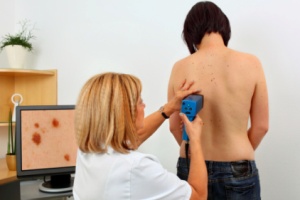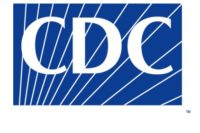 As rates of other cancers seem to be on the decline, the rates of malignant melanoma are on the rise. It is now the most common cancer among people 25-29 years old. A majority of new melanomas are being diagnosed in white males over the age of 50.
As rates of other cancers seem to be on the decline, the rates of malignant melanoma are on the rise. It is now the most common cancer among people 25-29 years old. A majority of new melanomas are being diagnosed in white males over the age of 50.
May is national skin cancer awareness month, so it is a good time to establish a routine of self-examination and get in to see your dermatologist for an annual full body exam, recommends Dr. Julie Pena, founder and president of Likewise Skincare and owner of Skin Solutions Dermatology and Skin Cancer Surgery, P.C in Nashville, TN. Dr. Pena is a board certified Dermatologist, trained Pathologist and MOHS micrographic surgeon.
"Anyone can get melanoma," says Dr. Pena. "Finding it early is the key to surviving this aggressive, potentially fatal cancer."
Dr. Pena outlines an easy mnemonic to help remember what to look for – ABCDE:
A is for Asymmetry: Look for moles where the shape of one half is different from the other.
B is for Border: Look for moles with irregular, scalloped, or jagged borders.
C is for Color: Look for moles with multiple colors or variation in color-especially shades of black, brown, blue, red, or white.
D is for Diameter: Melanomas are usually larger than 6 millimeters (the size of a pencil eraser) but they can be smaller too.
E is for Evolution/Evolving: Moles that are undergoing ANY kind of change, especially as outlined above, need to be evaluated by a medical professional.
"Another good rule of thumb to follow is the 'ugly duckling' sign," advises Dr. Pena. "If you spot a mole that just doesn't look like anything else you currently have or have seen before, then it needs to be checked."
When melanoma is found early, it is almost 100% curable, adds Dr. Pena. Having a full body exam is an easy process. A trained dermatology provider can perform a head to toe exam at a routine appointment.
In addition to doing self exams and having an annual full body exam, there are simple things Dr. Pena suggests can be done to reduce the risk of melanoma.
Stop outdoor and indoor tanning. Research shows indoor tanning increases a person's melanoma risk by 75%. Getting a base tan prior to a vacation does not protect you, it only increases the chance you'll develop skin cancer.
Use sunscreen every day. Look for an SPF of at least 30 as well as Zinc (no less than 6%) on the ingredient list. Apply 20 minutes before outdoor activity and reapply every 2 hours that you are outdoors and more often if you are sweating heavily or swimming. Even on cloudy, rainy, or snowy days you need to wear sunscreen if you are exposed to the sun.
Limit your outdoor activity to early morning and later afternoon. UV radiation is most intense during the hours of 10 AM and 4 PM. Plan outdoor activities to minimize exposure.
To learn more, visit: www.LikewiseSkincare.com.



